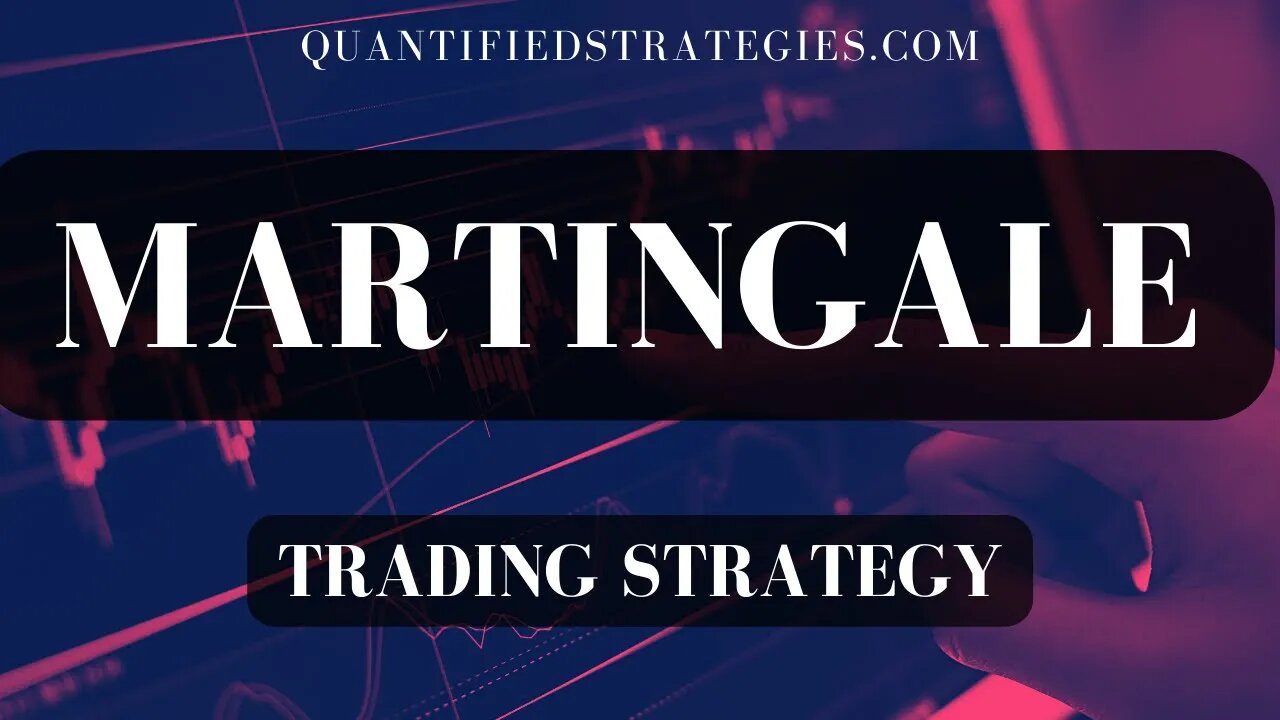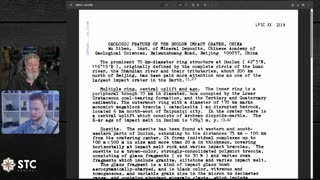Premium Only Content

Martingale Trading Strategy (Backtest & Rules)
✅→ Visit our website For Over 200 Free Quantified Strategies:
✅→ Buy 24 of our Best Trading Strategies: https://bit.ly/3r54NGH
✅→ Become a Member: https://www.quantifiedstrategies.com/member-quantified-strategies/
✅→ Drop us a line on [email protected]
✅→ Visit our website: https://www.quantifiedstrategies.com
✅→ TWITTER: https://bit.ly/Twitter_QS
✅→ INSTAGRAM: https://bit.ly/Instagram_QS
✅ → NEWSLETTER: https://bit.ly/substack_QS
=================================
The Martingale Trading Strategy with Backtest and Rules. The Martingale Trading Strategy is a popular way of trading in the financial markets. It is based on the concept of taking a larger trade size after a losing trade in the hope that the market will eventually reverse and end with a net profit equal to the size of the initial bet. It was originally used in gambling, where it is based on the statistical outcomes of an event with a 50% chance of it happening.
However, we don’t recommend using the Martingale trading strategy for trading. Instead, scale-in trading strategies should be used, which is the smarter way to enter a position. We suggest the opposite of the Martingale trading strategy - be very careful and spread your equity into many baskets. It is better to use data-driven strategies that are uncorrelated to reduce risk.
The Martingale Trading Strategy is a very popular technique among traders. It can be used to maximize profits and mitigate risks. However, it is important to use it wisely and cautiously. It is not suitable for all traders, and it is important to understand the risks associated with it.
If you’re looking to learn the ins and outs of the Martingale Trading Strategy, then you’ve come to the right place. We have a wealth of information on the Martingale Trading Strategy that you can use to become a better trader. From the basics to advanced strategies, we have everything you need to become a successful trader.
We have videos, tutorials and guides that can help you master the Martingale Trading Strategy and make it work for you. Whether you’re a novice or experienced trader, you can find the resources you need to learn the Martingale Trading Strategy and use it to your advantage.
So, if you’re looking for the best place to learn about the Martingale Trading Strategy and make it work for you, then you’ve come to the right place. Our videos, tutorials and guides will help you understand the basics and the advanced aspects of the strategy, as well as how to use it to maximize profits and reduce risks. Start learning today and become a successful trader with the Martingale Trading Strategy!
#martingaletradingstrategy #scaletrading #datadrivenstrategies #uncorrelatedstrategies #tradingtradingstrategies #learntotrade #quant #tradingtips #martingale
✅→You can read more about it here:
https://www.quantifiedstrategies.com/martingale-trading-strategy
✅→ TWITTER: https://bit.ly/Twitter_QS
✅→ INSTAGRAM: https://bit.ly/Instagram_QS
✅ → NEWSLETTER: https://bit.ly/substack_QS
RISK DISCLAIMER
Quantified Strategies (SIA Lofjord) is not an investment advisor. The content and information provided are educational and should not be treated as financial advisory services or investment advice. Trading and investment in securities involve substantial risk of loss and is not recommended for anyone who is not a trained trader or investor – it shall be conducted at your own risk. It is recommended that you never risk more than you are willing to lose. Leverage can lead to substantial losses. Any use of leverage, margin, or shorting is at your discretion. Quantified Strategies (SIA Lofjord) is not responsible for any losses that occur as a result of its content and information.
Hypothetical or simulated performance results have certain limitations. Unlike an actual performance record, simulated results do not represent actual trading. Also, Since the trades have not been executed, the results may have under or overcompensated for the impact, if any, of certain market factors, such as lack of liquidity. Simulated trading programs, in general, are also subject to the fact that they are designed with the benefit of hindsight. No representations are made that any account will or is likely to achieve profit or losses similar to those shown.
-
 LIVE
LIVE
SlingerGames
3 hours agoRumble Spartans, ASSEMBLE! | Push for 400 Followers
59 watching -
 5:22:07
5:22:07
xXFadedAngelXx
7 hours agoSPARTAN NIGHT! Featuring the Communiy! Thanks @OhHiMark! & @Phyxicx! for the invite
6.23K1 -
 LIVE
LIVE
AdmiralSmoothrod
6 hours agohalo MCC - Multiplayer Rumble No. 21 - its gonna get sticky
59 watching -
 LIVE
LIVE
BlackDiamondGunsandGear
3 hours agoNEW Glock Gen6 / Still Hate them / After Hours Armory
45 watching -
 8:49
8:49
Hollywood Exposed
4 hours agoBill Maher Explodes After Killer Mike Refuses Any Accountability On Air
1.75K7 -
 LIVE
LIVE
DLDAfterDark
4 hours agoThe Average Gunfighter - Gen 6 Glocks - The After Hours Armory
83 watching -
 12:31
12:31
Robbi On The Record
2 days ago $8.91 earnedWhy Nothing Feels Real Anymore | The Science, Culture, and Spiritual War Behind the Fog
63.7K31 -
 25:21
25:21
Stephen Gardner
7 hours agoWait Until You Hear This UNEXPECTED Trump Story!
24.3K68 -
 1:19:11
1:19:11
Squaring The Circle, A Randall Carlson Podcast
13 hours agoBreaking: New Evidence & Studies For Younger Dryas Impact Hypothesis
16K -
 38:57
38:57
TampaAerialMedia
14 hours ago $0.92 earnedKEY WEST & THE DRY TORTUGAS - Tours, Tips, Food, & Lodging
9.76K